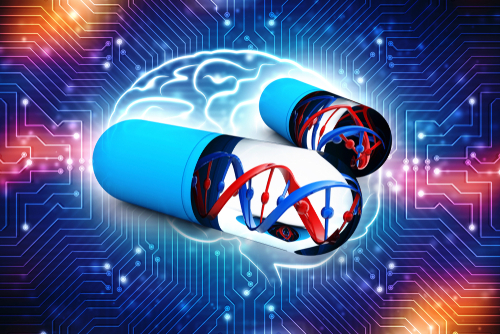How Could Gene Therapy Help AADC Deficiency Patients?
Written by |

Gene therapy — replacing a faulty gene in the body — may hold the answers to the permanent treatment of aromatic l-amino acid decarboxylase (AADC) deficiency
This rare genetic disorder is caused by mutations in the gene that provides cells with the instructions they need to make a key enzyme. That enzyme is essential in the process of making neurotransmitters, or signaling molecules, in the brain.
The mutations in this gene in people with AADC deficiency cause the enzyme to not function properly, meaning that not enough neurotransmitters are made. As a result, nervous signals in the brain are weak, which in turn causes muscle weakness and developmental delays.
While there is currently no cure for AADC deficiency, new treatments — such as advances in gene therapy — are being developed all the time.
Here are some frequently asked questions about gene therapy and AADC deficiency:
What is gene therapy?
Gene therapy refers to a group of relatively new technologies. They can correct mutations by introducing pieces of DNA that contain a normal (non-mutated) copy of a gene inside cells. Cells that take up these pieces of DNA would then produce normal protein. This approach may be able to treat genetic diseases such as AADC deficiency.
How is gene therapy performed?
Gene therapy for AADC deficiency, and most other genetic diseases, is still experimental. A virus — modified so as to not cause disease — is used to introduce the correct gene copy into the patient’s cells. Because AADC deficiency primarily affects nerve cells, the virus must be administered directly into the brain during a surgical procedure.
Are there any uncertainties?
Because this type of therapy is very new, there are important questions that must still be answered. Such questions include whether one dose of this type of gene therapy is enough, or whether patients will need multiple treatments over their lifespan.
Another point to consider is the patient’s age: can this type of treatment help older children, or is it going to be effective in very young children only?
What are the risks involved?
Gene therapy for AADC deficiency involves brain surgery to introduce the virus to the right area of the brain. There is a risk of infection and fever following this surgery. Inflammation in the brain may cause swelling, which can be very dangerous for patients.
Some patients may also react badly to the virus. Specifically, their immune system may overreact to the treatment, essentially rejecting the therapy. This can be tested prior to treatment, and some patients may be found to not be good candidates for gene therapy.
Can it treat or cure AADC deficiency?
Preliminary results from a study testing a gene therapy called GT-AADC — being developed by PTC Therapeutics to treat AADC deficiency — have been very promising. A small group of children, ages 21 months to 8.5 years, completed the clinical trial. All of the children were unable to raise their heads or sit up without help at the beginning of the study. They all showed clinically meaningful, sustained improvements in motor, cognitive, and language milestones for up to five years following treatment. The younger the children were at the time of treatment, the better the response.
More research still is needed to confirm the potential benefits of this approach before it can routinely be used in the clinic.
Last updated: Sept. 23, 2019
***
AADC News is strictly a news and information website about the disease. It does not provide medical advice, diagnosis or treatment. This content is not intended to be a substitute for professional medical advice, diagnosis, or treatment. Always seek the advice of your physician or other qualified health provider with any questions you may have regarding a medical condition. Never disregard professional medical advice or delay in seeking it because of something you have read on this website.





